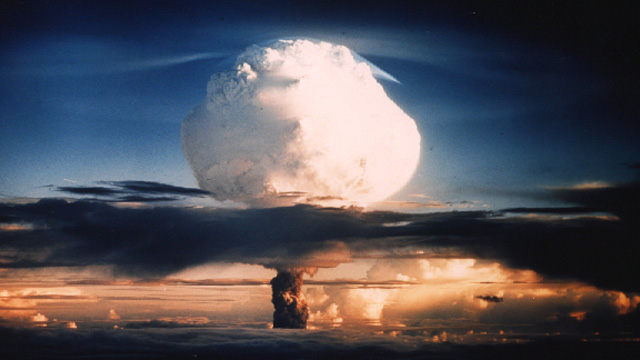On 1 November 1952, the United States detonated the world’s first thermonuclear bomb, codenamed “Ivy Mike,” marking the dawn of the hydrogen age and escalating the nuclear arms race to a terrifying new level.
A weapon of unprecedented power
The test took place on Enewetak Atoll in the Marshall Islands, a remote Pacific testing ground that became synonymous with Cold War experimentation. Unlike earlier atomic bombs that relied solely on fission, the “Ivy Mike” device used a combination of fission and fusion—mimicking the reactions that power the sun. The explosion released energy equivalent to 10.4 megatons of TNT, more than 700 times the destructive force of the bomb dropped on Hiroshima in 1945.
A city erased in an instant
The detonation vaporised the small island of Elugelab, leaving a crater over 1.5 kilometres wide and 50 metres deep. The immense fireball and resulting mushroom cloud rose more than 40 kilometres into the atmosphere. Observers, stationed dozens of kilometres away, described the scene as “the birth of a new sun.” Radioactive fallout drifted for hundreds of miles, underscoring the devastating environmental consequences of thermonuclear testing.
Strategic and political implications
The successful test dramatically shifted the global balance of power. It confirmed the United States’ temporary technological lead over the Soviet Union, which had tested its first atomic bomb only three years earlier. Yet the advantage was short-lived: by August 1953, the Soviet Union detonated its own hydrogen bomb, intensifying fears of mutually assured destruction and deepening Cold War paranoia.
Legacy of destruction and deterrence
The “Ivy Mike” test transformed nuclear strategy. It demonstrated that humanity now possessed the means to annihilate itself many times over, prompting both deterrence doctrines and disarmament movements. For the Marshall Islands, however, the legacy was one of suffering—radiation exposure, displacement, and environmental ruin that would persist for generations.
Newshub Editorial in North America – 1 November 2025



Recent Comments